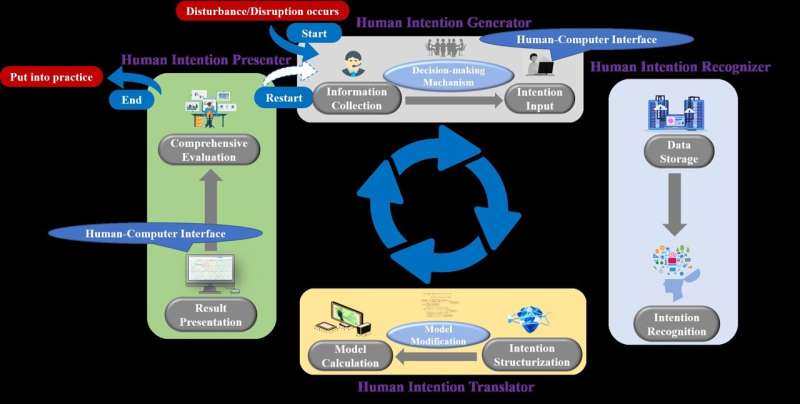Advancements in railway system management: A multifaceted approach
by KeAi Communications Co.

As of the end of 2022, the Chinese high-speed railway network had surpassed 40,000 kilometers. However, the rapid expansion of this railway system has presented significant challenges to its operational department. Unforeseen external and internal factors can lead to deviations from the scheduled arrival and departure times of trains.
In such instances, the primary objective is to minimize the impact of these unexpected events and swiftly restore normal operations in disrupted situations. Notably, the responsibility for timetable rescheduling primarily rests with human dispatchers, and these dispatchers are finding it increasingly challenging to cope with the growing workload.
To address this challenge, a team of researchers in the country has introduced an innovative human-computer interaction framework. “This framework enables train dispatchers to propose various timetable adjustments to either the original or previously adjusted schedules,” said Wenhao Zhu, first author of the study published in the journal High-speed Railway.
The instructions are then processed, stored, analyzed and interpreted by a computer program. Subsequently, this data is used to modify and calculate the underlying mathematical model, resulting in the generation of a new adjusted timetable.
“This newly generated timetable is then presented to the dispatchers for their review and potential modifications,” added Zhue.
Importantly, this framework supports iterative processes, accommodating dispatchers’ intentions until the final results meet their satisfaction. A practical demonstration system called RTARS (real-time timetable automatic rescheduling system) has been developed based on this framework and successfully implemented within the Beijing Railway Administration, showcasing its effectiveness in real-world scenarios.
Going forward, the team will focus on four primary areas of expansion to further enhance the efficiency and effectiveness of railway system management. there areas are human-computer interaction for information gathering; human-computer interaction for intention recognition; human-computer interaction for integrated timetable optimization; and human-computer interaction for presentation.
More information:
Wenhao Zhu et al, Real-time high-speed train rescheduling based on a Human-Computer Interaction framework, High-speed Railway (2023). DOI: 10.1016/j.hspr.2023.06.001
Provided by
KeAi Communications Co.
Citation:
Advancements in railway system management: A multifaceted approach (2023, October 16)
retrieved 16 October 2023
from https://techxplore.com/news/2023-10-advancements-railway-multifaceted-approach.html
This document is subject to copyright. Apart from any fair dealing for the purpose of private study or research, no
part may be reproduced without the written permission. The content is provided for information purposes only.
For all the latest Technology News Click Here
For the latest news and updates, follow us on Google News.
